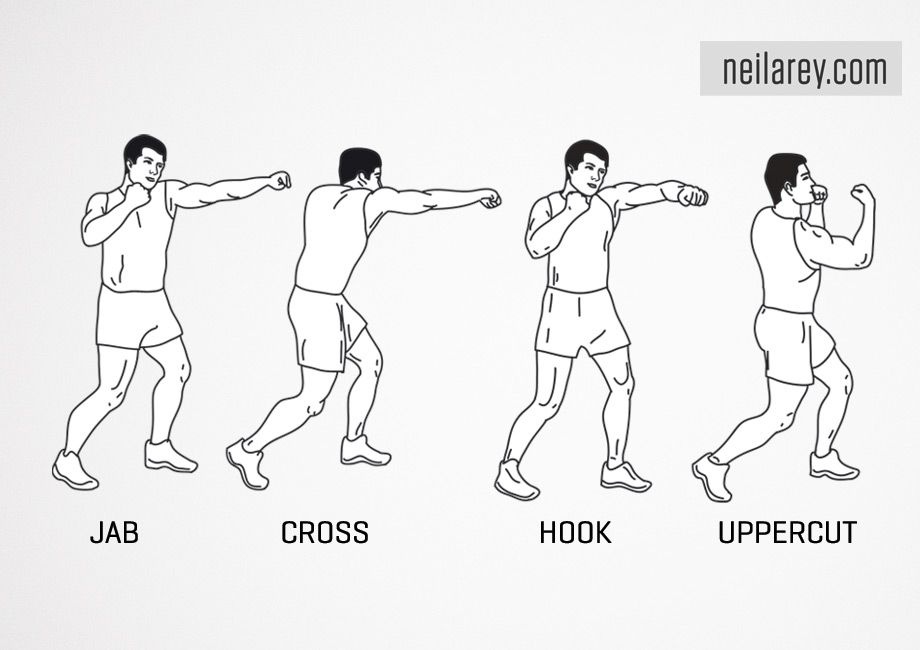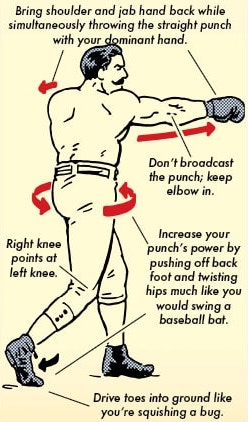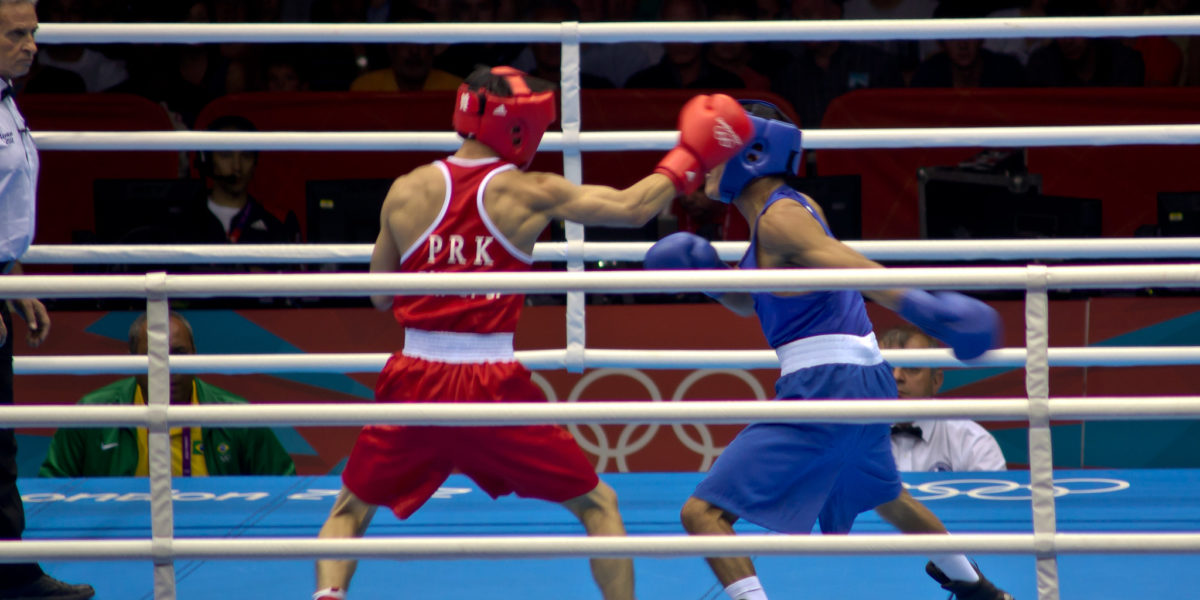You and I are living creatures. Every living creature on Earth has some means of self-preservation, and while society and technology have advanced humans far beyond the norms of the animal kingdom, deep down at our core is the self-preserving instinct known as “fight or flight”. When the moment arises that flight is not possible, that unarmed self-defense is the only option, a human will most likely throw a punch. Unless you are trained in a combat sport or a style of self-defense, that punch will likely be inefficient and ineffective. I’m here to break down, with biomechanics, the most effective way to throw that punch.

Why we punch and how we do it
In boxing, that sport that deals with punching a good bit, there are three main types of punches: straight (jab/cross), hook, and uppercut. As pictured above, the three motions have varying paths traveled by the fist and they engage different muscles in different ways.
“Hold on a minute, why not throw a karate chop or a big ol’ open hand slap?” A study was done to answer this question, where untrained men and women hit a target with an open hand, a karate chop and a closed fist. For each of the techniques they calculated the effective mass, which measures the impact the target experiences. The results showed that while the open hand slap and karate chop had similar effective masses, the closed fist punch had an effective mass that was more than double the other techniques. So, unless you’re a black belt in karate with a mean karate chop, let’s stick to punching if the need arises.
Which punch to utilize
Now that you have decided that the first step is to clench your fist and rear up for a punch, how exactly do you do that? Biomechanical studies have shown for low-level boxers the cross, which is a straight punch with the dominant hand, generates noticeably more punching force. When elite level boxers such as Olympic athletes are observed, however, all three techniques produce extremely similar punching forces. This suggests that for the average untrained human, the most effective and efficient punch to use is going to be the cross.

But why is the straight cross generating more force in amateur boxers, and how can elite boxers generate high forces with the other techniques? It’s all answered by biomechanics.
Each punch is unique in how force is generated due to the motion of our bodies and the muscles each motion uses. For example, elite level boxers generate much more of their punching force from extension of their back leg and the extension of their elbow when throwing the cross. This is similar to how a baseball pitcher generates force by driving off the mound with their back leg in their throwing motion. When throwing hooks and uppercuts, elite boxers tend to utilize their hip rotation much more than lower-level boxers, who rely on their shoulder motion. All of this leads to the fact that while you’re throwing your fist at a target, most of the power comes from your waist and legs, so mixing a leg day into your workout schedule could be beneficial.
Further Reading
Means of increasing strength of the punch
Amateur Boxer Biomechanics and Punch Force.
Featured image from “Olympic Boxing” which is licensed under CC BY-NC 2.0.
